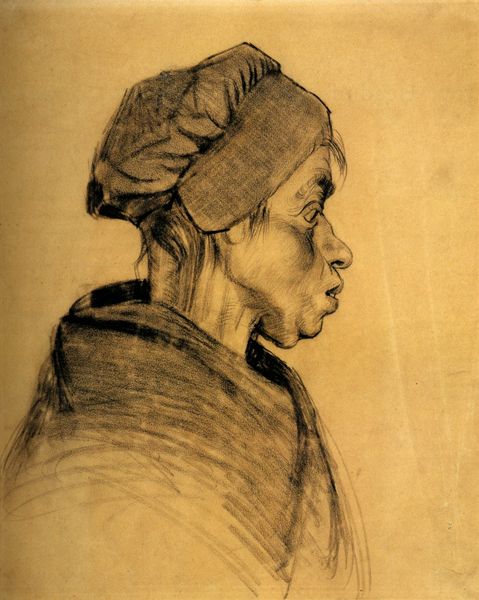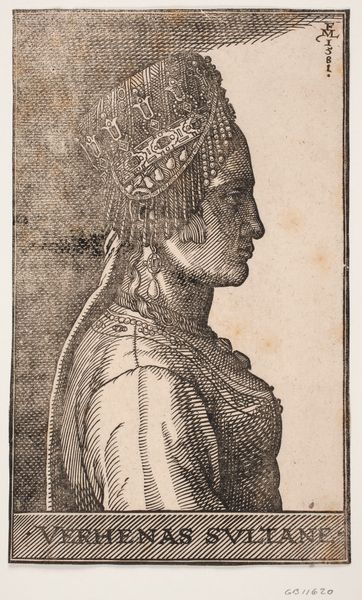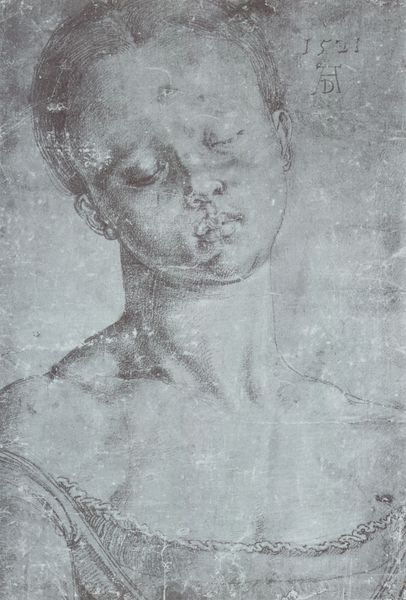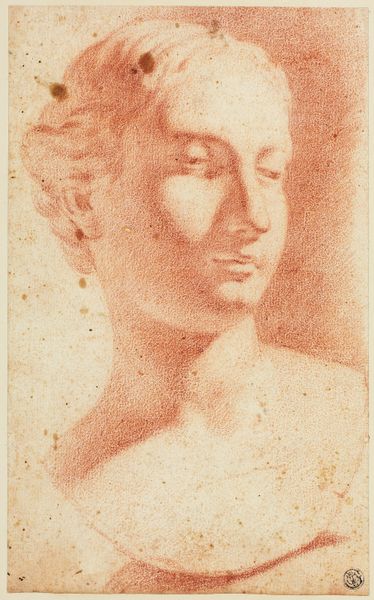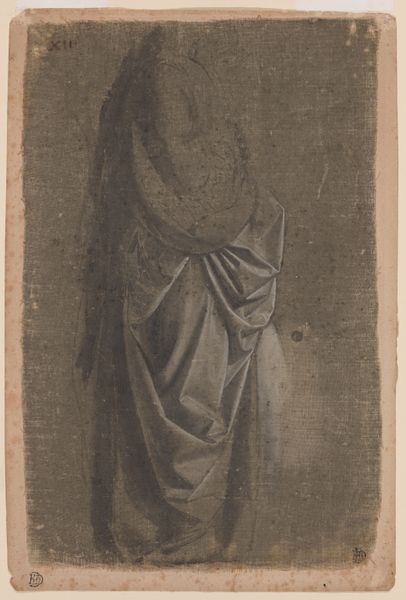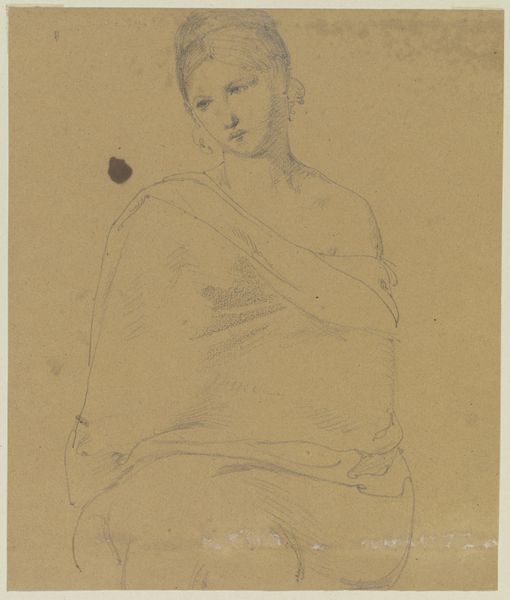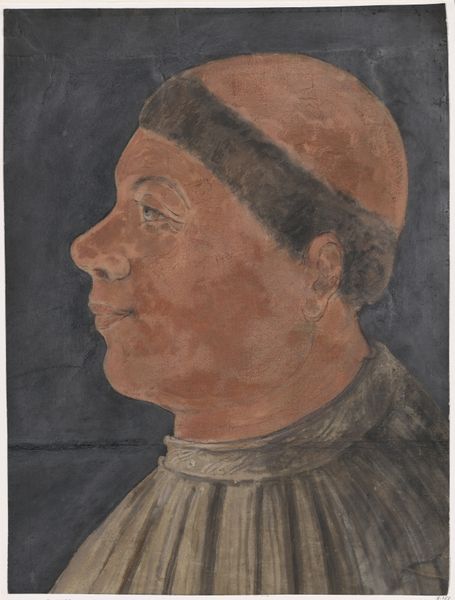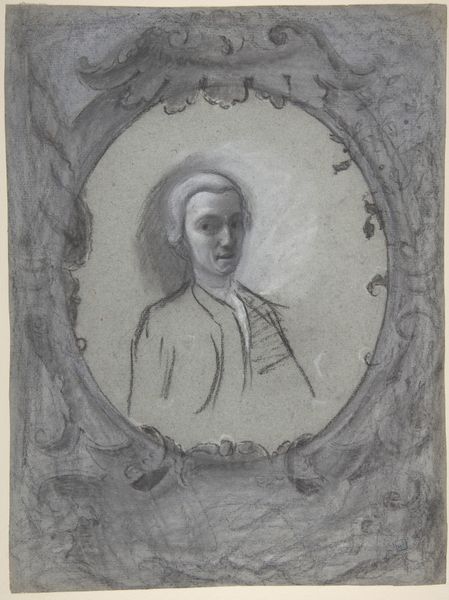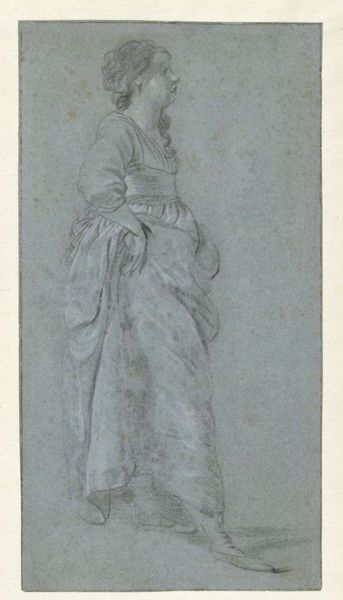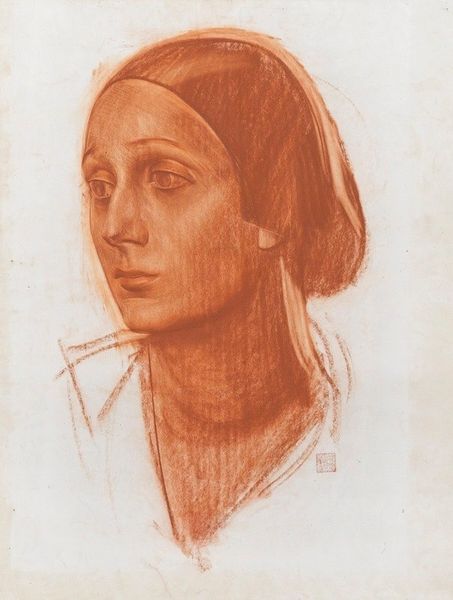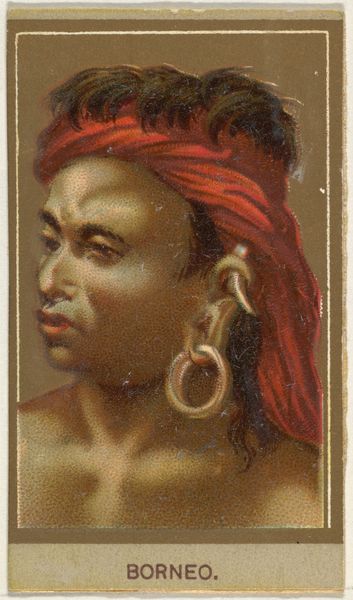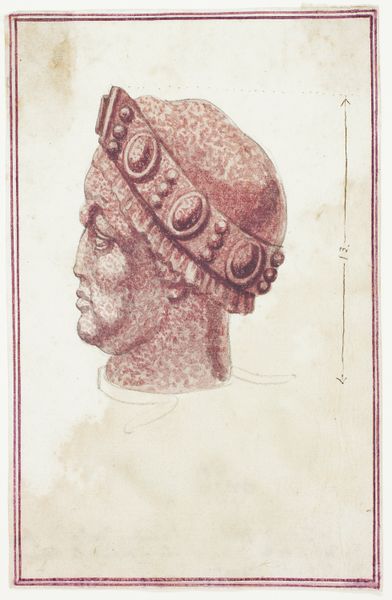
drawing, pencil
#
portrait
#
drawing
#
toned paper
#
head
#
charcoal drawing
#
11_renaissance
#
coloured pencil
#
pencil
#
northern-renaissance
Copyright: Public domain
Curator: Let's turn our attention to this arresting drawing, St. Apollonia, rendered in pencil on toned paper by Albrecht Dürer in 1521. Editor: It’s incredibly somber, almost mournful. Her eyes are closed, head tilted. The overall green tone reinforces this subdued atmosphere. Curator: Absolutely. Dürer, working in the Northern Renaissance, frequently depicted religious figures. St. Apollonia is the patron saint of dentists, invoked against toothache. Her representation here invites contemplation on faith and suffering, prevalent themes of the era. We have to remember that imagery and saints were very powerful at that time. Editor: Knowing her patronage makes the closed eyes and downturned face all the more compelling. Is this serenity, pain, or a combination of both? Given Dürer's socio-economic standing, his access to better living conditions at the time, does he capture an accurate representation of her experiences, or just imagine her in pain? Curator: Her serene appearance could signal a resistance or transcendence through suffering, aligning with Apollonia's story of martyrdom. While the pose may evoke resignation, Dürer employs techniques common for that period in portraying holy subjects to project calmness even in adversity. The control of the lines creates smooth tonal variations in the paper support; also, her attire tells the story of her time and situation in society. Editor: Yes, that play of light is beautiful, and definitely speaks to her spiritual well-being. Dürer’s skill with line is extraordinary, conveying texture and depth even within the confines of a drawing. But the symbolism interests me, how power and religious figures were idealized. Curator: And let's not forget the historical moment: the Reformation was exploding. Dürer was keenly aware of the debates around religious imagery, and figures like St. Apollonia were very much a part of the discussions about how art should function. Editor: Ultimately, a powerful testament to Dürer’s technical mastery and an important snapshot of the religious and political landscape of the 16th century. Curator: A fascinating work indeed, prompting a rich dialogue between faith, art, and societal forces of the Renaissance.
Comments
No comments
Be the first to comment and join the conversation on the ultimate creative platform.
